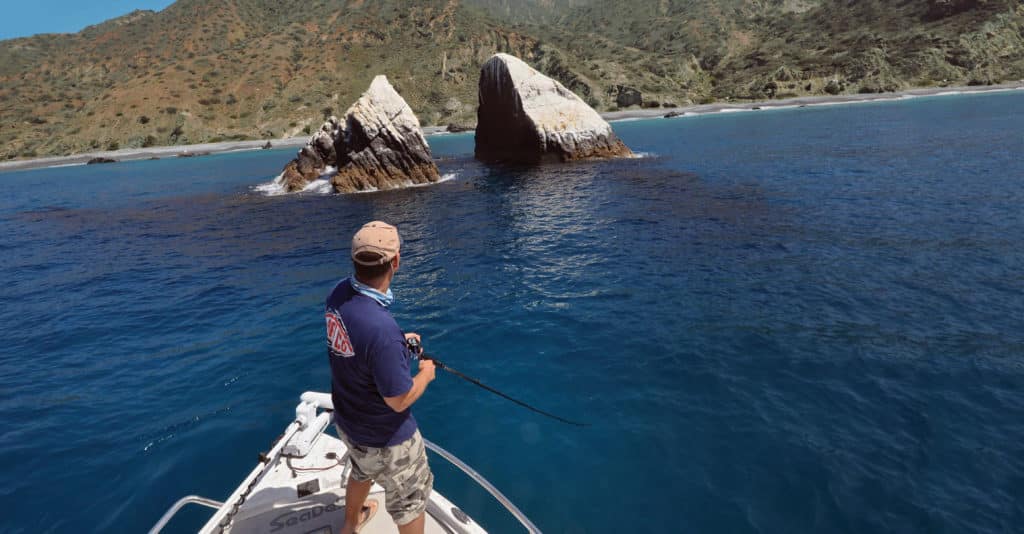
With the morning sun peeking over the coastal mountains, a strong tide off the rocky shoreline of California’s Palos Verdes peninsula bent the thick kelp forest sideways. Right after idling into position, Capt. Ben Florentino cast a light metal jig known locally as surface iron. During the retrieve, the jig swam enticingly over the submerged amber fronds, but not for long. A big, aggressive calico bass rocketed from under the swaying canopy, inhaling the lure and bullying its way back down into the kelp.
Florentino reared back and wound fast, winning the battle that ended with the release of the chunky checkerboard-sided bass, a genuine kelp crusher estimated at 8½ pounds.
The calico bass, also known as kelp bass, is one of the few species afforded game fish status in the Golden State. Commercial fishing for calicos and its related species — barred sand bass and spotted sand bass — is prohibited. Over the past decade, the popularity of calico bass surged, thanks to tournaments sanctioned by the Saltwater Bass Series (SBS) and Salt Water Bass Association (SWBA) reminiscent of the freshwater bass tournament phenomenon. Calico bass fishing is accessible to many different styles of boats too.
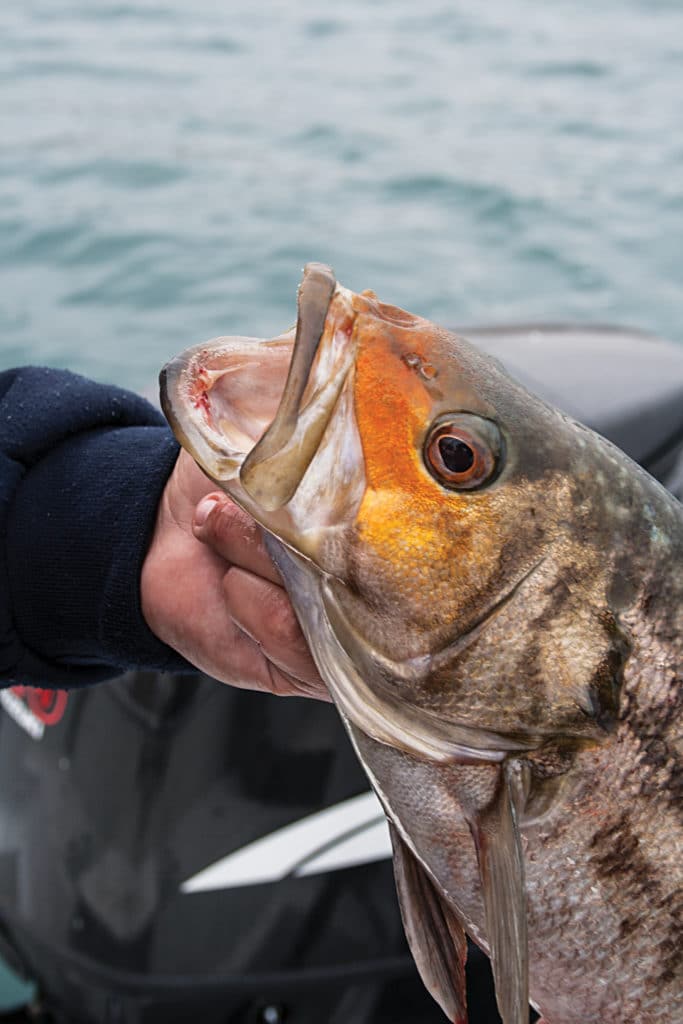
It makes sense. Calicos, after all, share traits with largemouth and smallmouth bass, including an affinity for heavy cover. They even strike the same types of lures, allowing Southern California calico pros to use similar techniques. Some Calico bass lures don’t look all that different than smallmouth bass lures.
Just like their freshwater counterparts, calico tournament anglers have advanced successful techniques for targeting the largest specimens, those fish that propel anglers high in the standings. Two top pros shared key secrets how to catch calico bass of over 6 pounds.
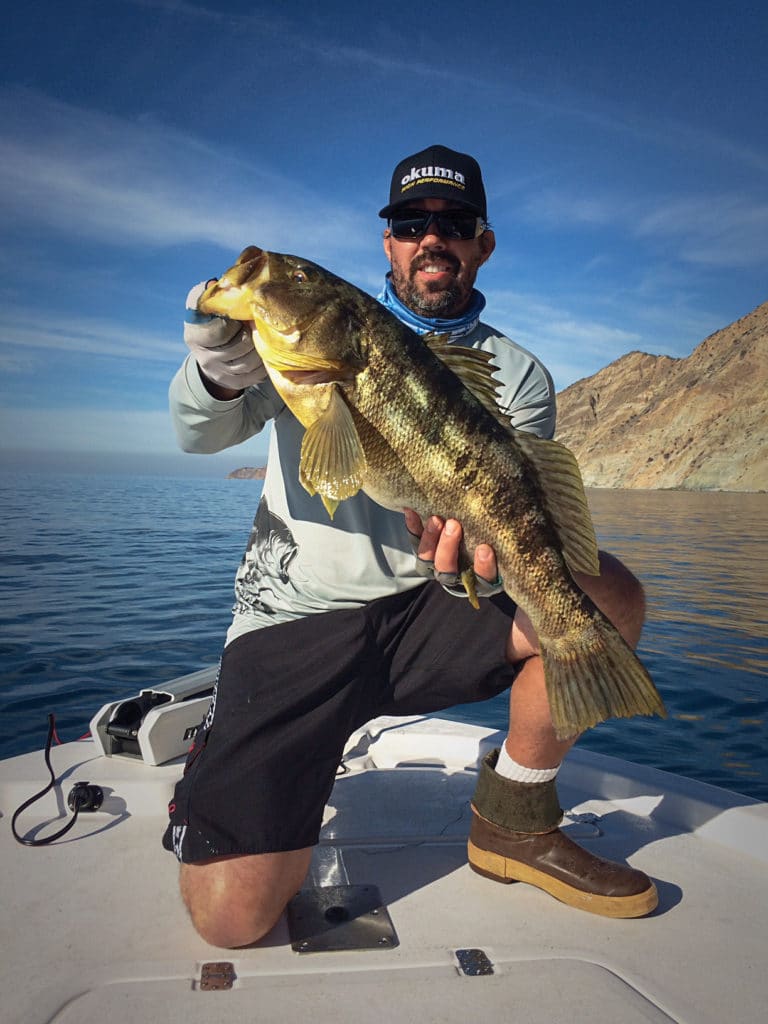
How to Catch Calico Bass in Kelp
Florentino, a former freshwater pro who now fishes salt water almost exclusively, finds lures most effective for big bass. “We don’t always catch a lot of fish with lures, like with live bait,” he says. “But the fish we catch are quality calicos.”
A 10-pounder is the Holy Grail of calico bass angling. Long Beach-based Florentino has two such trophies — a 10-pound, 2-ounce fish and another weighing 10 pounds, 4 ounces — plus four bass of more than 9 pounds on his record. According to Florentino, moving water is essential when targeting big calicos. Strong current pushes the kelp below the surface and moves bait over the top of the canopy, and that’s when the big calicos come out to feed. But it’s critical to position the boat to make long casts parallel to the current and swim your lure over the kelp.
“It doesn’t really matter if the tide is flooding or ebbing, as long as there is current,” says Florentino.
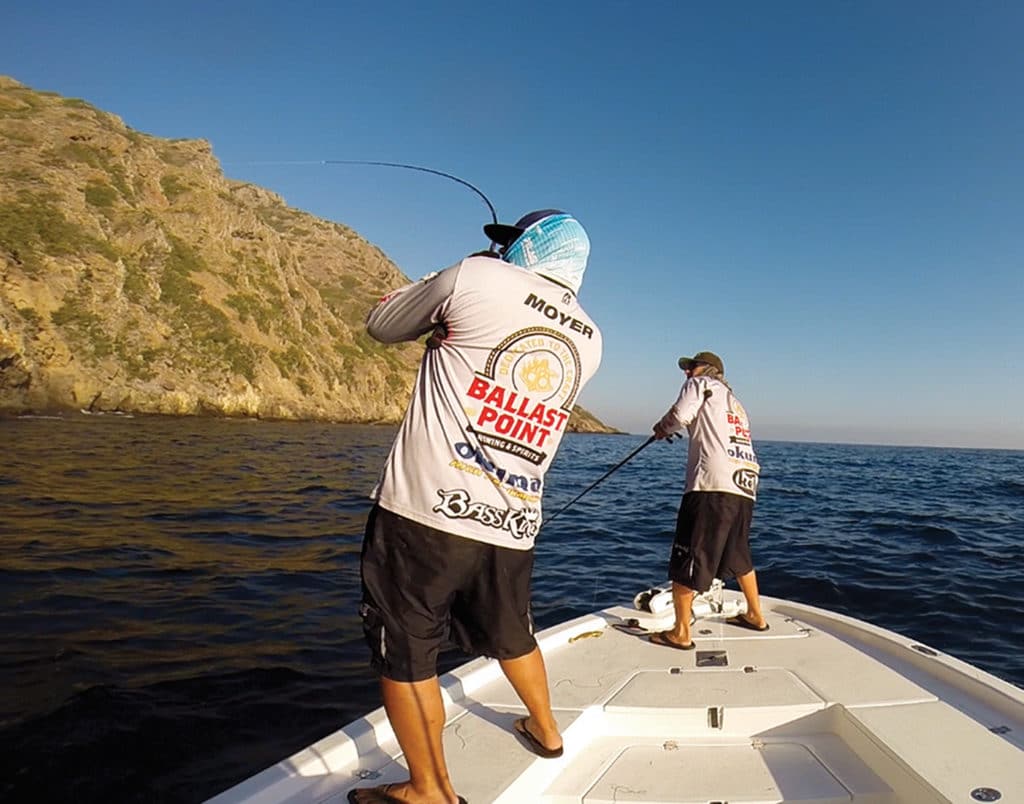
His best calico bass lure is a 6½-inch Kicker 45 surface iron in amber with a bit of black near the rear, plus carries a heavy-duty treble hook. For his calico bass setup, he favors a 9-foot Shimano Teramar 90H rod paired with a Tranx supersize baitcasting reel loaded with 80-pound braid and short trace of 50- to 60-pound fluorocarbon.
The long rod and the heft of the surface iron, almost 3½ ounces, allows him to rip off long casts over the kelp and cover lots of water. If he doesn’t get bit right away, he moves the boat along the edge of the kelp to work fresh territory. Another good lure for this technique is the Shimano Waxwing, which swims with a tantalizing erratic side-to-side action.
Drags should be kept tight. Calico bass don’t jump, but they bolt for cover once hooked. “You can’t allow the fish to pull drag,” warns Florentino. “Otherwise, he’ll get locked up in the kelp, and you’ll have a tough time getting him out.”
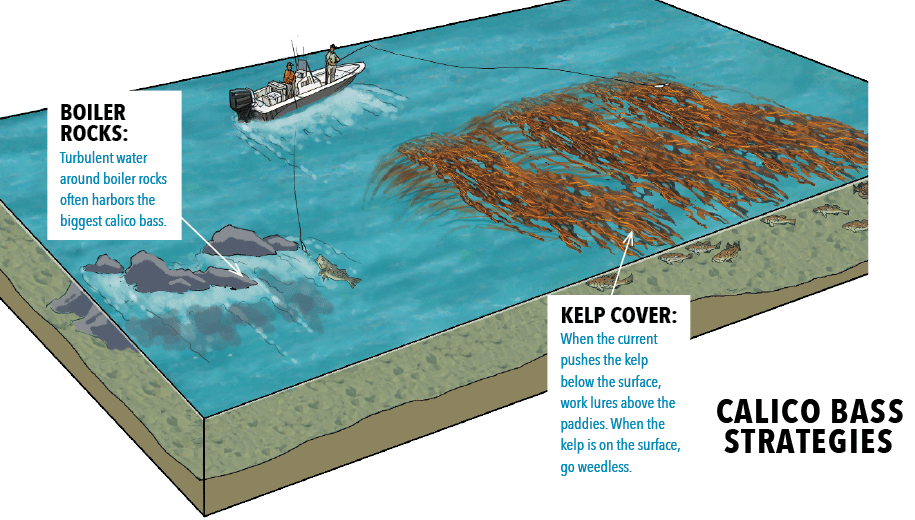
Some of the Best Calico Bass Lures are Weedless
Tournament pro Matt Moyer and his partner, Nic Dragomire, from San Diego-based Team Ballast Point, have three SBS tournament victories between them, and they owe much of their success to weedless lures, especially when the current isn’t strong enough to submerge the kelp.
“A weedless lure lets us cast right into the thick of it,” Moyer explains. “We pull the lure over the floating kelp, and fish swim through open spots in between to grab it.” Big calicos often bust through the floating kelp to attack a lure. Other times, they pounce on it as it crosses an open patch of water.
Moyer likes a 7½- to 8-foot rod, with a light tip for casting swimbaits, but plenty of backbone to horse a big calico out of the kelp, which is decidedly more difficult when the fronds are on the surface.
He spools up an Okuma Komodo 364 baitcasting reel with 65-pound braid and a 60-pound fluoro leader. “We recommend buttoning down the drag because these fish like to get you in the rocks or the kelp quick,” he says.
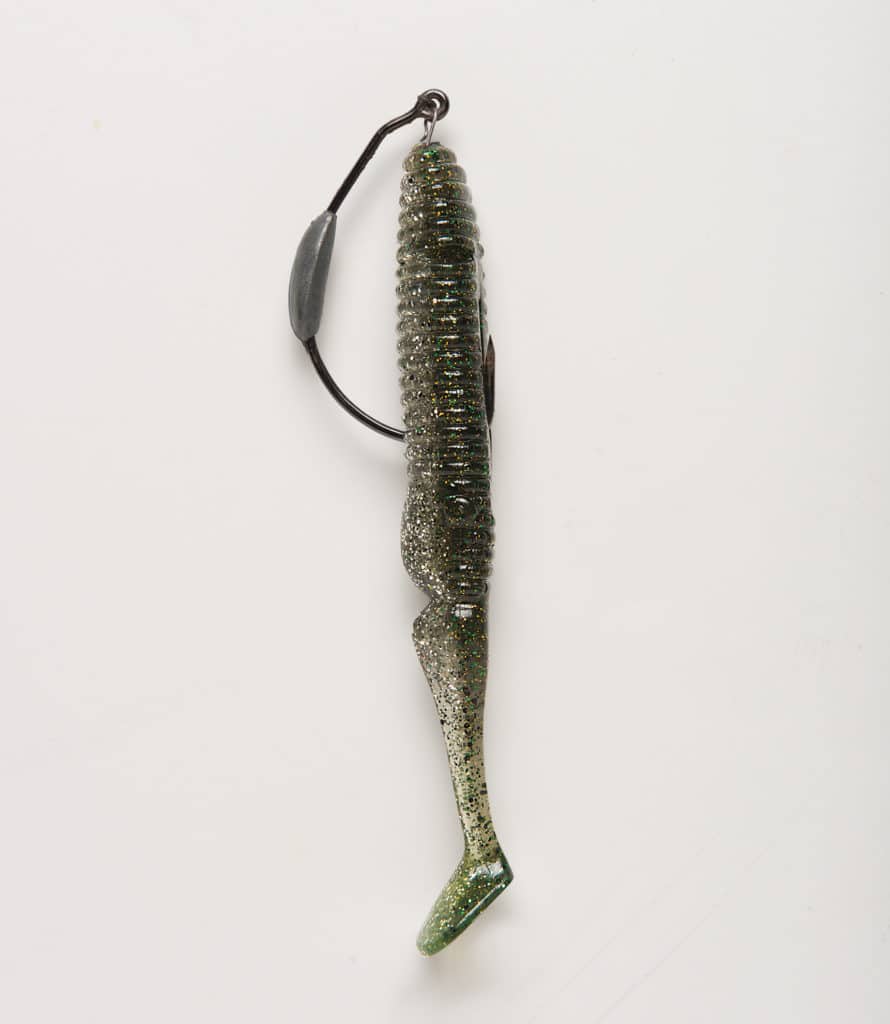
Flip Swimbaits for Calico Bass
During slack tide, Florentino targets fish that, while not actively feeding, still strike out of instinct. “I like to flip swimbaits into holes in the kelp,” he explains. “Then I let the lure fall straight down, parallel to the kelp stalks. A lot of times, a big bass just can’t help himself. He sees the bait fluttering down from the canopy and can’t pass up the easy meal.”
Florentino also flips lures next to isolated kelp stalks to reach single large calicos that hover near the base during slack tide. With this technique, the strike is subtle, sometimes barely a tap as the lure stops short of the bottom. This is your cue to put the reel in gear and set the hook.
Although he experiments with swimbaits for flipping, the Long Beach pro has found that smaller 4-inch paddle-tail baits rigged with a 2-ounce leadhead often work best. He also uses a smaller baitcasting reel, such as the Shimano Curado paired with a Shimano Teramar rod.
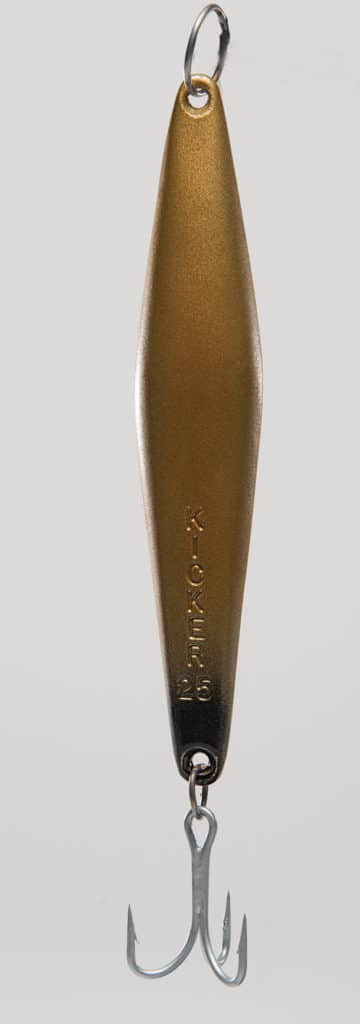
How to Catch Calico Bass Near Boiler Rocks
Big calico bass love structure, and many pros believe that so-called “boiler rock,” boulders close to shore, where waves sweep and break, are the best spots for big bass. “I like boiler rocks and reefs with a lot of surge,” says Moyer. “For some reason, bigger fish like to stay shallow.”
Florentino agrees, but he prefers to target the rocky habitat in less than 20 feet of water early in the morning, before the sun lights up the shallows. Calico bass grow large by being cautious, and they are more easily fooled in low light. Casting and retrieving surface irons works well for fishing boiler rocks, but if there’s kelp in the area, Florentino opts for swimbaits such as a 9-inch Sledge Hammer with a 1- to 1½-ounce weedless leadhead. Bigger baits seem to attract bigger fish, especially in the turbulent surge around shore rocks. Florentino’s biggest calico came from a boiler rock in 5 feet of water.
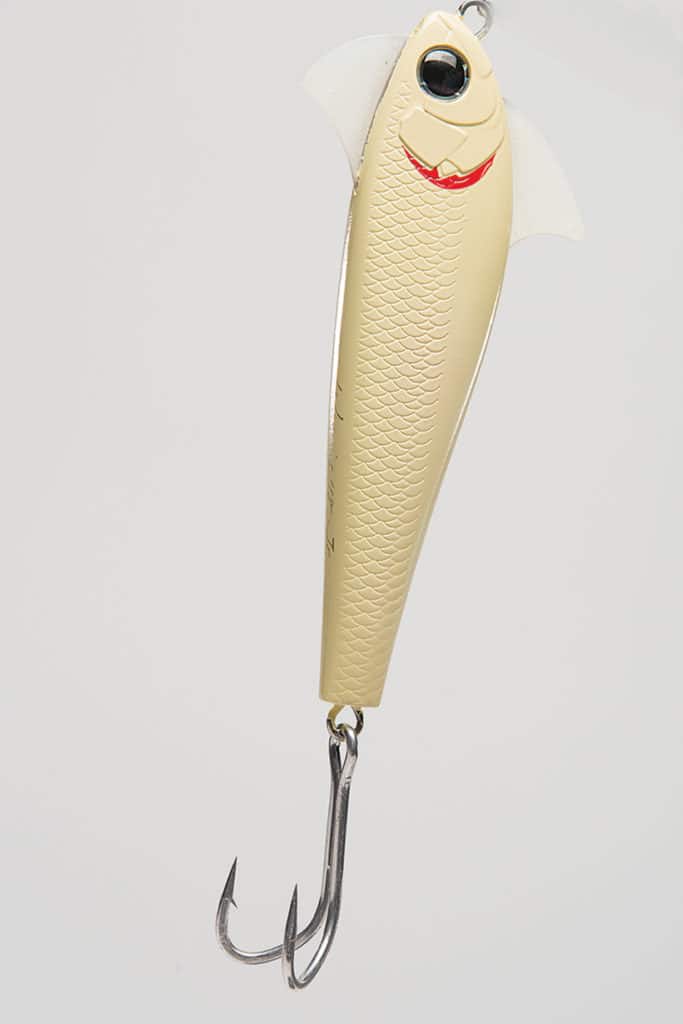
Fish Catalina Island for Calico Bass
While you find calico bass anywhere you find kelp or rocks along Southern California’s coast or offshore islands, both Florentino and Moyer agree the top spot for trophies is Catalina Island.
“I fish all the islands off Southern California, but my favorite is Catalina,” says Florentino. “Thanks to a growing catch-and-release ethic, the population of big bass at the island is strong and stable.
“If you want a big calico off Southern California, I would go to Catalina,” Moyer advises. “There are giants there.”
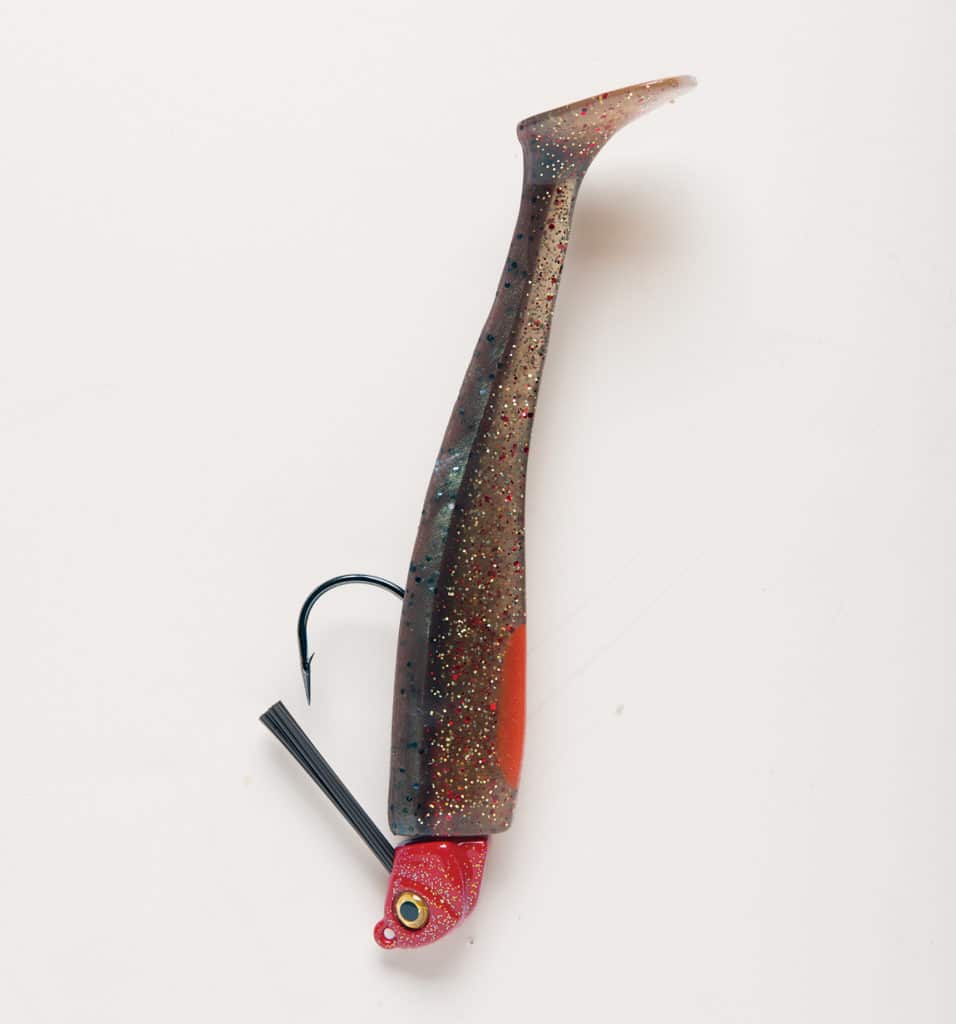
Catalina Island has produced a number of double-digit calico bass in the past years, and most of them are still there, thanks to catch-and-release efforts. Calicos don’t migrate far — all the more reason to remember a trophy with photos, not fillets. That way, the kelpcrushers are sure to be around for years to come.









